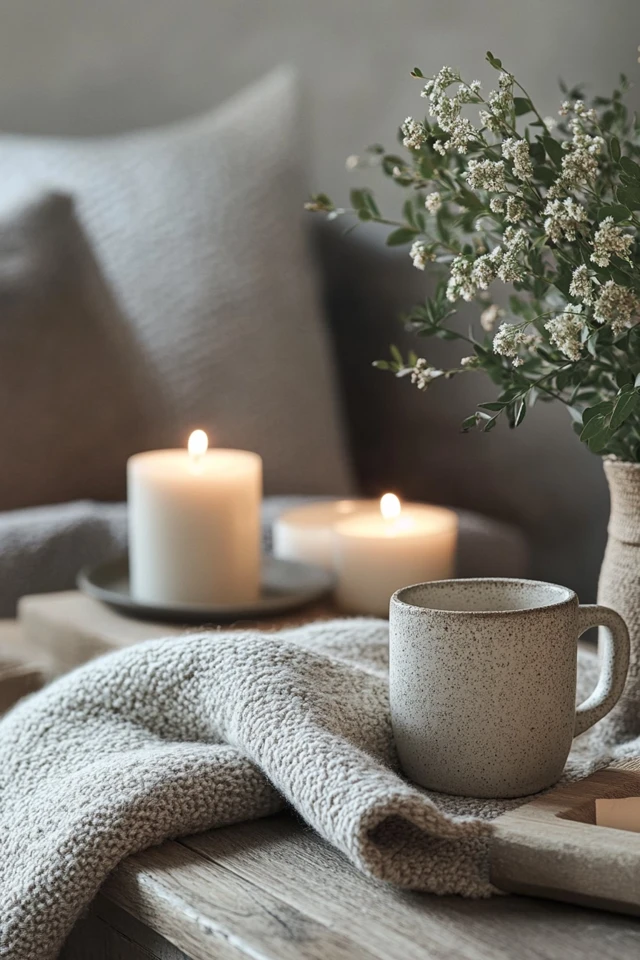Introduction
Hygge (pronounced “hoo-gah”) is more than just a trend—it’s a way of life rooted in the Danish philosophy of coziness, warmth, and contentment. Creating a hygge-inspired room is all about curating a space that feels like a warm hug, where you can unwind and truly savor the little joys of life. I first discovered hygge during a particularly stressful winter, when I was searching for ways to make my home feel like a retreat. After layering soft blankets, lighting candles, and simplifying my decor, my space transformed into a sanctuary of comfort, and I’ve never looked back.
In this guide, I’ll show you how to style your room for a hygge vibe, combining cozy textures, warm lighting, and thoughtful decor that invites comfort and relaxation. Whether it’s a reading nook, a bedroom, or your living space, these tips will help you embrace hygge and create a space that feels like home.
What Is Hygge, and Why Does It Matter?
Key Elements of Hygge
- Cozy Comfort: Focuses on softness and warmth.
- Simplicity: Emphasizes a clutter-free, functional space.
- Connection: Creates an environment that fosters togetherness and mindfulness.
- Joy in the Everyday: Celebrates simple pleasures, like a warm cup of tea or a good book.
Why Hygge Matters
- Promotes relaxation and reduces stress.
- Encourages mindfulness and gratitude for life’s small joys.
- Creates a home environment that nurtures your well-being.
1. Embrace a Soft, Neutral Color Palette
Why It Works
Hygge spaces are all about calm, inviting tones that create a serene atmosphere.
How to Do It
- Use soft neutrals like white, cream, beige, and light gray as your base.
- Incorporate earthy tones like sage green, terracotta, or muted blues for warmth.
- Stick to a cohesive palette to maintain a tranquil, harmonious look.
- Avoid bold, overpowering colors that disrupt the calm vibe.
2. Layer Textures for Ultimate Coziness
Why It Works
Hygge is rooted in creating tactile comfort through layers of textures.
How to Do It
- Add chunky knit blankets, faux fur throws, and velvet cushions to your seating or bed.
- Use sheepskin rugs or soft area rugs for warmth underfoot.
- Incorporate natural materials like linen, wool, or cotton for a relaxed, lived-in feel.
- Mix textures—smooth ceramics, woven baskets, and plush fabrics—to add depth.
3. Prioritize Ambient Lighting
Why It Works
Soft, warm lighting is a hallmark of hygge, creating a calming glow that invites relaxation.
How to Do It
- Use warm-toned bulbs for a soft, golden light (2700K–3000K).
- Incorporate table lamps, floor lamps, and string lights for layered lighting.
- Light unscented or subtly scented candles to create a cozy, flickering ambiance.
- Place lights strategically to highlight cozy corners or focal points in the room.
4. Create a Cozy Seating Area
Why It Works
A comfortable seating area invites you to relax, read, or connect with loved ones.
How to Do It
- Use plush chairs or a deep sofa with lots of throw pillows for extra comfort.
- Add a window seat or reading nook with soft cushions and blankets.
- Include a footstool or pouf for elevated comfort.
- Arrange seating in a way that promotes conversation and connection.
5. Incorporate Natural Elements
Why It Works
Nature plays a big role in hygge design, grounding the space and adding organic beauty.
How to Do It
- Add greenery with plants like ferns, pothos, or peace lilies.
- Use wood accents—a coffee table, picture frames, or bowls—for a rustic touch.
- Incorporate stone or ceramic decor, like vases or candleholders, for earthy textures.
- Display natural elements like pinecones, dried flowers, or branches in glass jars.
6. Simplify and Declutter
Why It Works
A tidy, minimalist space reduces stress and makes room for what truly matters.
How to Do It
- Remove unnecessary items and keep surfaces clean and functional.
- Use woven baskets or fabric bins for stylish storage.
- Display only a few meaningful decor pieces to avoid visual clutter.
- Choose furniture with hidden storage to keep the space neat and organized.
7. Add Hygge-Inspired Decor
Why It Works
Thoughtful decor enhances the cozy atmosphere without overwhelming the space.
How to Do It
- Use candles in clusters for a warm, inviting glow.
- Display books on coffee tables or shelves for a lived-in feel.
- Include artwork or prints with calming, nature-inspired themes.
- Add personal touches like framed photos, handmade crafts, or sentimental items.
8. Designate a Relaxation Zone
Why It Works
A dedicated space for unwinding makes it easier to embrace hygge in your daily routine.
How to Do It
- Create a reading corner with a comfortable chair, a blanket, and a lamp.
- Set up a tea station with your favorite mugs, teas, and a kettle.
- Add a small table for puzzles, journaling, or crafts.
- Include a yoga mat or meditation cushion for mindfulness practices.
9. Use Scent to Set the Mood
Why It Works
Pleasant scents evoke relaxation and complete the sensory experience of a hygge space.
How to Do It
- Use essential oils in a diffuser with calming scents like lavender, eucalyptus, or vanilla.
- Light scented candles with subtle, natural aromas like pine, cinnamon, or sandalwood.
- Incorporate dried herbs or sachets of lavender in drawers and shelves.
- Boil a pot of water with orange slices, cloves, and cinnamon for a natural fragrance.
10. Emphasize Togetherness
Why It Works
Hygge is about more than just decor—it’s about creating a space that fosters connection.
How to Do It
- Arrange seating to encourage conversation and closeness.
- Keep board games or cards in the room for cozy gatherings.
- Add a music player or Bluetooth speaker for soft, relaxing background music.
- Create a welcoming atmosphere with enough space for guests to feel comfortable.
Picture Gallery

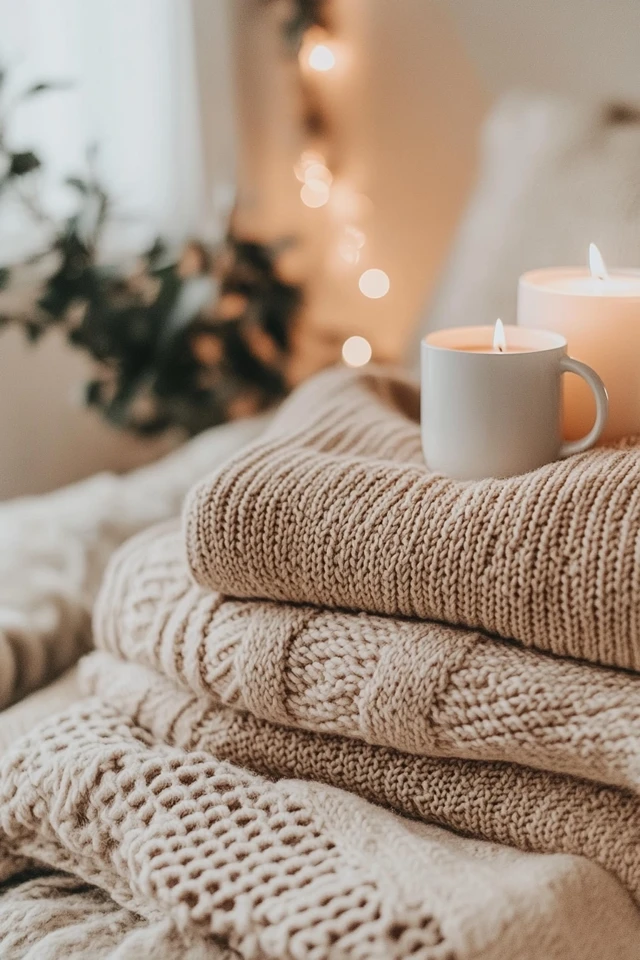
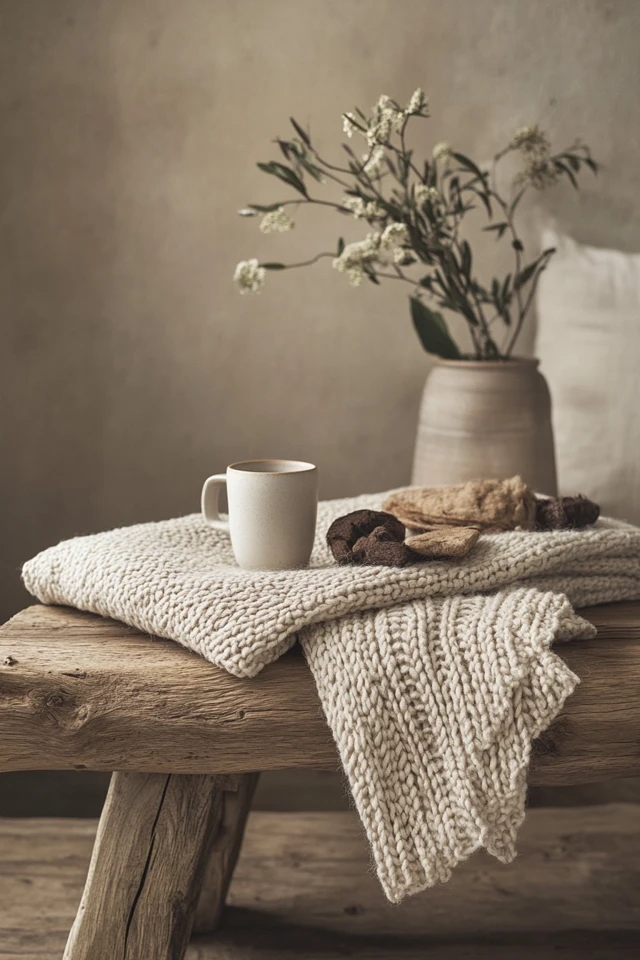
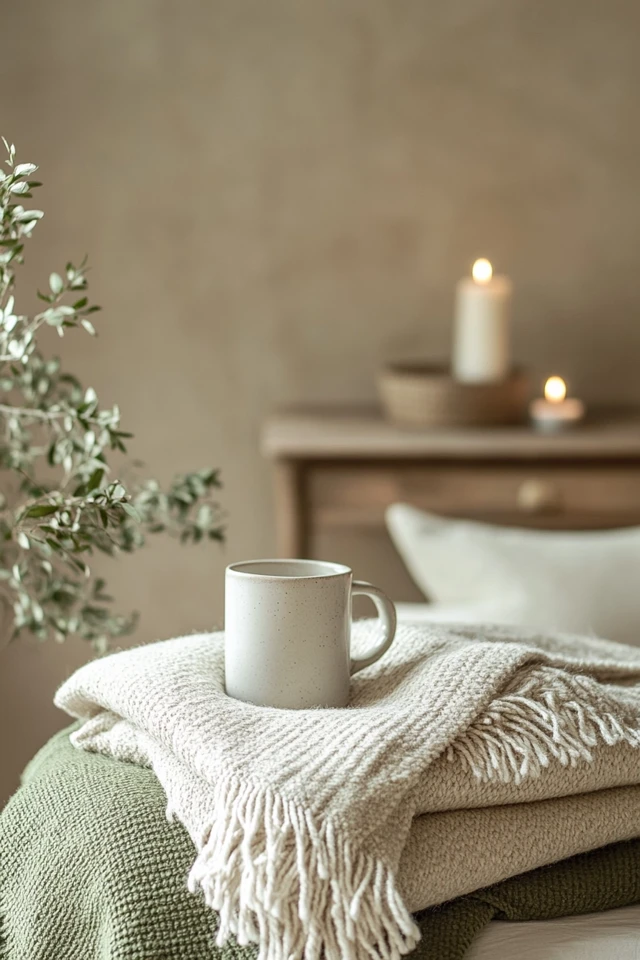
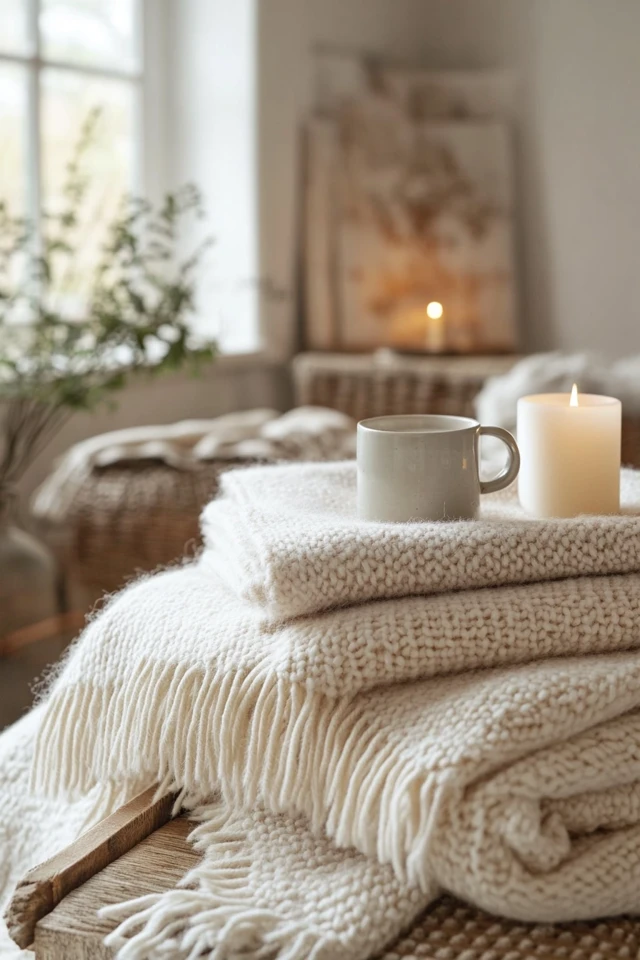
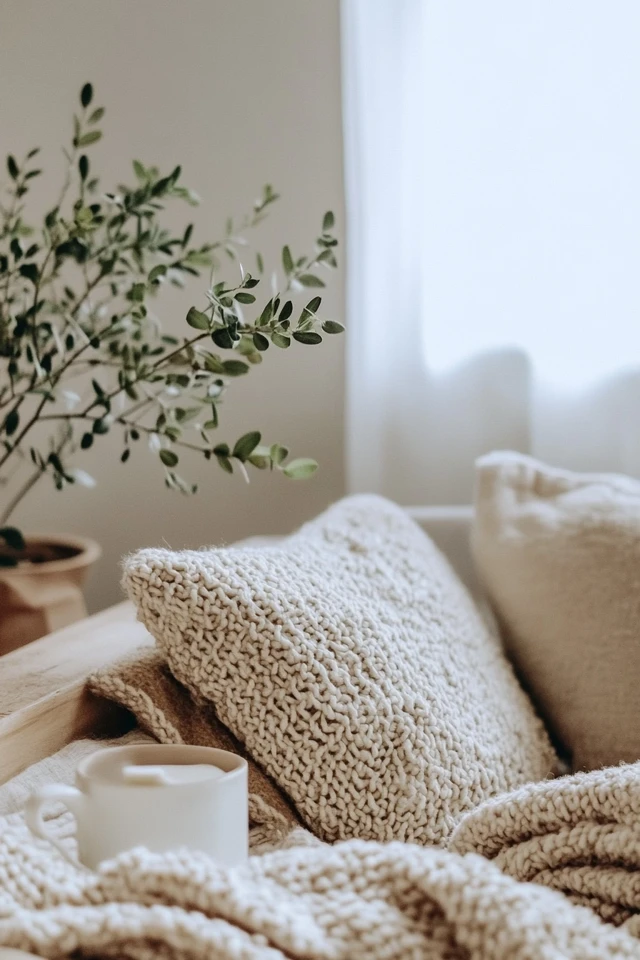
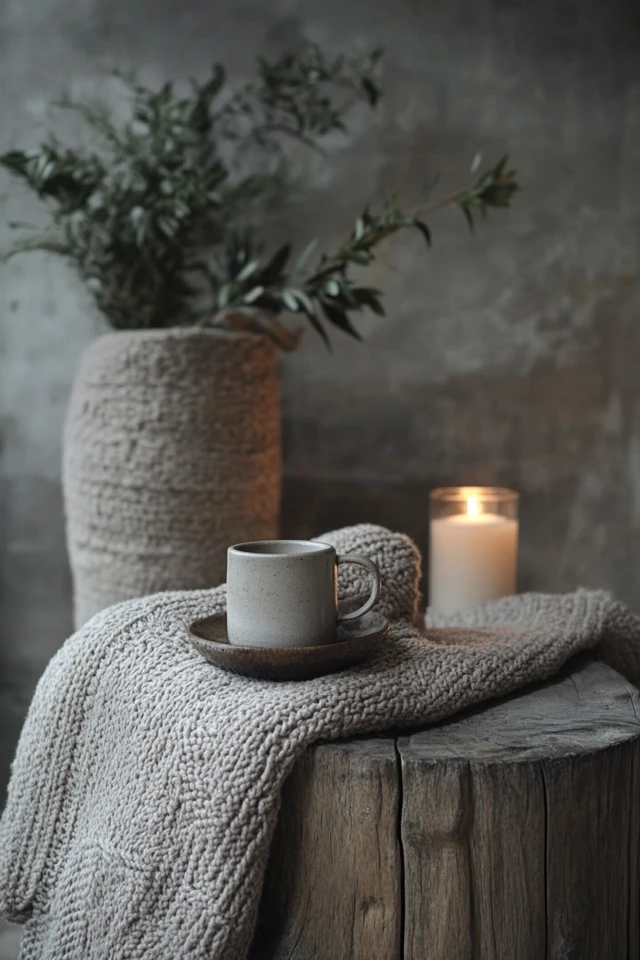
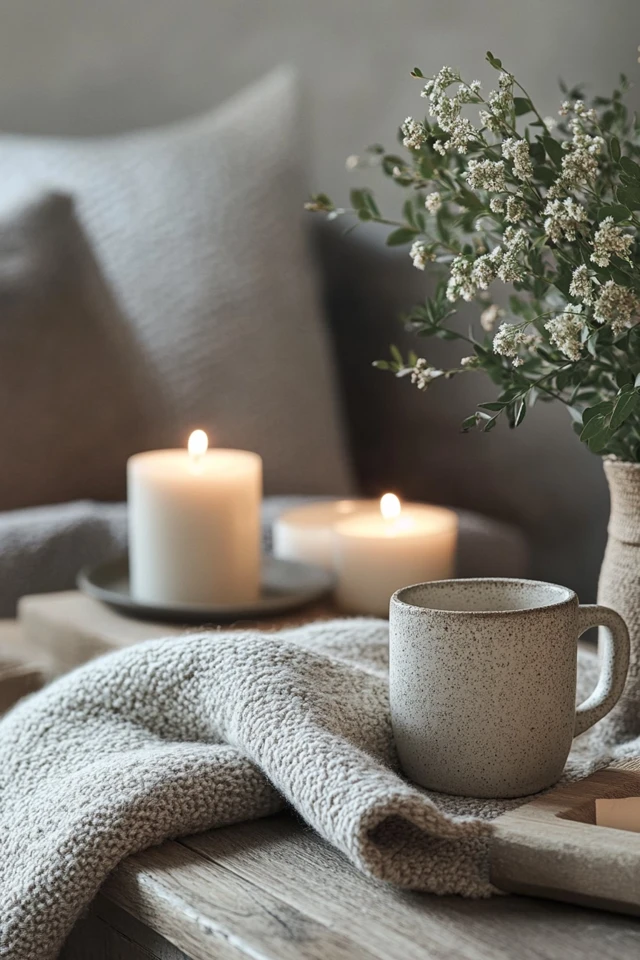
Conclusion
Styling your room for a hygge vibe is about more than just aesthetics—it’s about crafting a space that feels like a sanctuary. From soft textures and ambient lighting to thoughtful decor and a clutter-free layout, every detail works together to create an atmosphere of warmth, comfort, and mindfulness.
What I love most about hygge design is how it encourages us to slow down and savor life’s simple pleasures. Whether it’s curling up with a good book, sharing laughter with friends, or enjoying a moment of quiet reflection, your hygge-inspired room becomes a backdrop for the moments that matter most.
So grab a blanket, light a candle, and let hygge transform your space—and your mindset—into one of ultimate comfort and contentment.
FAQ
What colors work best for a hygge-inspired room?
Soft neutrals like white, beige, and gray work well, along with earthy tones like sage green, terracotta, or muted blue for warmth.
How do I make a small room feel hygge?
Focus on cozy textures, minimal decor, and warm lighting. Add functional storage to keep the space clutter-free.
What’s the best lighting for a hygge vibe?
Use warm, soft lighting from candles, string lights, and lamps with warm-toned bulbs (2700K–3000K).
Can I create a hygge room on a budget?
Yes! Focus on small changes like adding throw blankets, lighting candles, and decluttering the space. Thrift stores are great for finding cozy decor.
How do I maintain a hygge vibe year-round?
Adapt seasonal elements like greenery, blankets, or scents while keeping the foundational principles of simplicity, comfort, and warmth.

